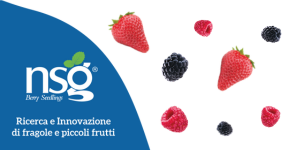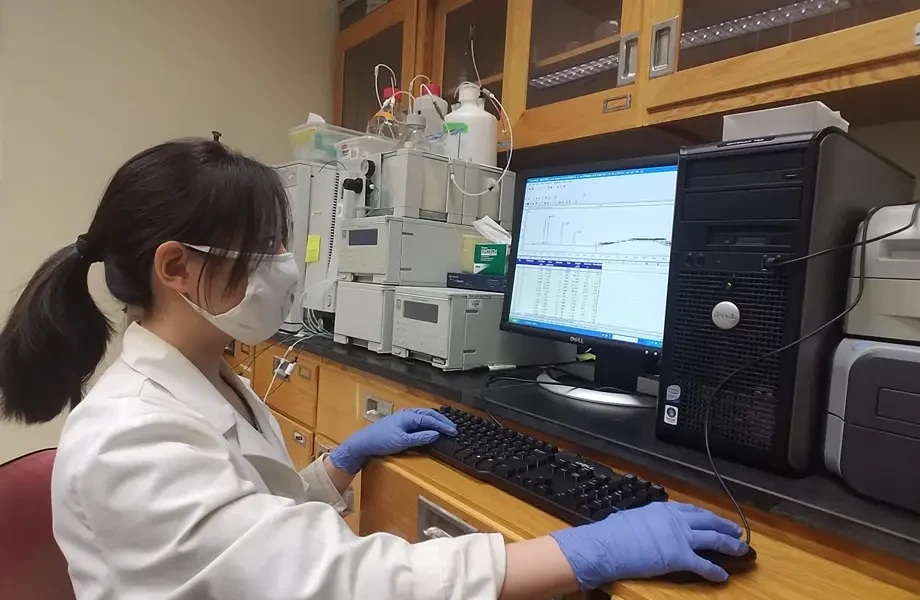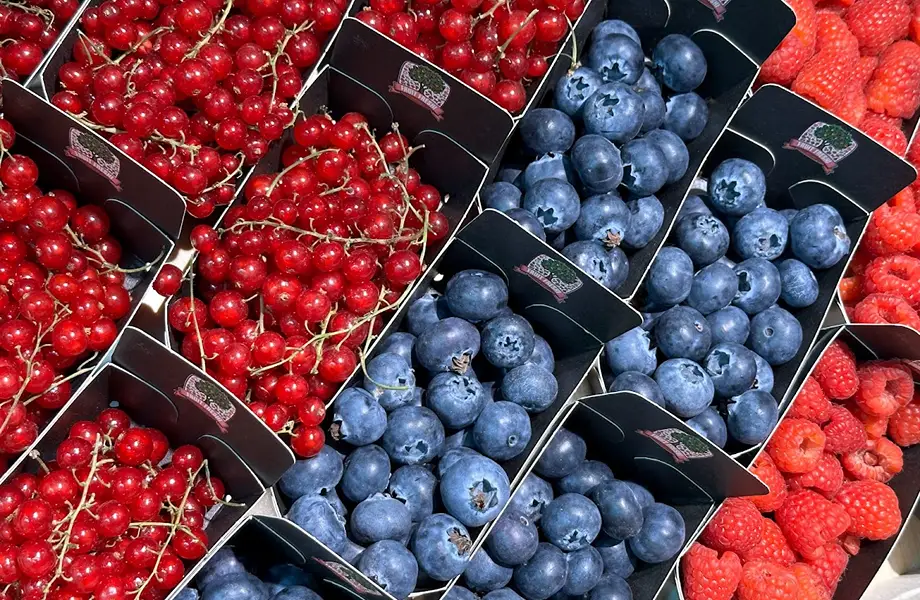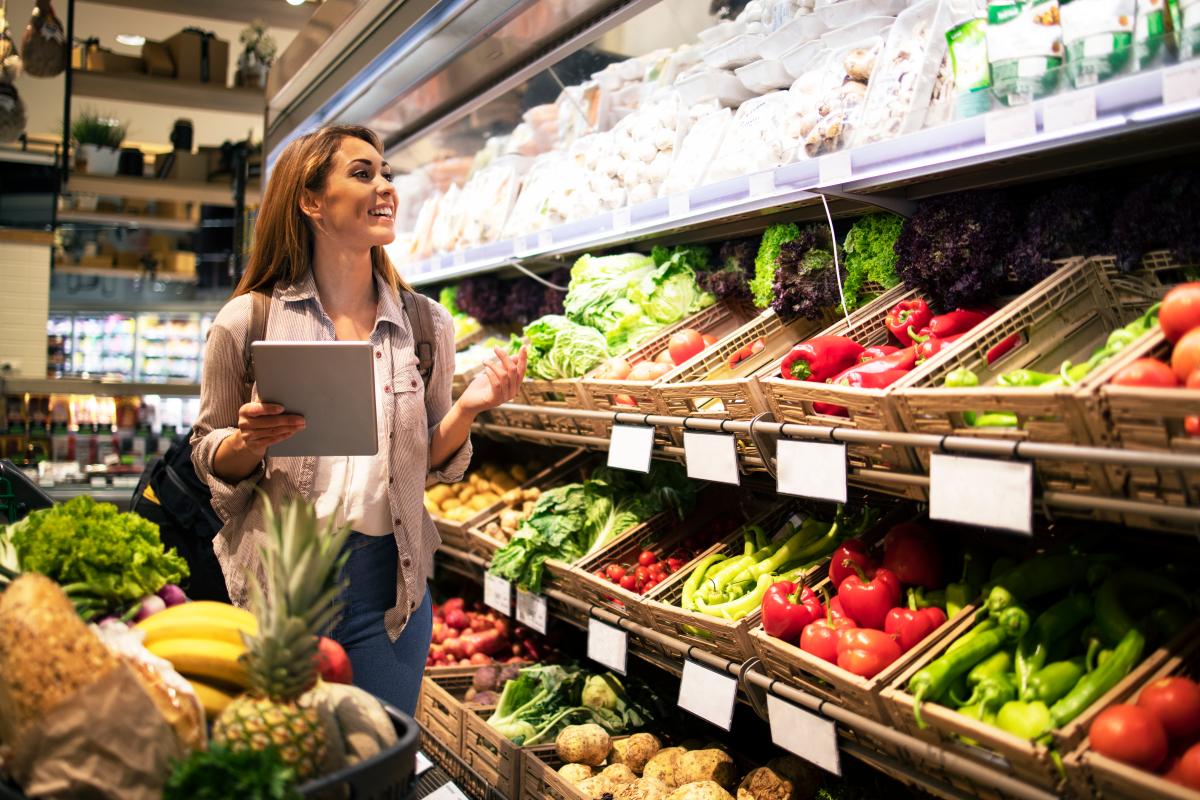The VacCAP, a coordinated transdisciplinary project aimed at addressing major bottlenecks limiting the growth of the U.S. Vaccinium industry, has recently released a scientific video on the importance of blueberry firmness, particularly in relation to consumer preferences, mechanical harvesting, and breeding programs.
The video covers the methods for measuring firmness using a firmness analyzer, the key components contributing to fruit firmness, and the role of these factors in post-harvest quality.
The video discusses the following topics:
1. Importance of Firmness in Blueberries
- Consumers prefer firmer and crispier blueberries over soft or mushy ones.
- Firmer blueberries are better suited for mechanical harvesting, as they are more resistant to internal bruising, making them more durable for transport and storage.
2. Firmness Analyzer and Measurement Techniques
- A firmness analyzer is a tool that measures multiple mechanical properties of the fruit.
- The device operates using a probe that can compress or puncture the fruit to assess its resistance.
- Different types of probesallow measurement of different properties:
- Flat probe: Measures maximum force, Young’s modulus, and mean internal force.
- Compression probe: Assesses hardness and resilience.
- Needle probe: Measures the firmness of outer layers, such as the skin.
3. Calibration and Data Collection
- Before measurement, the instrument must be calibrated:
- A two-kilogram calibration weight is used to set the force reference.
- The probe height is calibrated to ensure accuracy.
- Data is collected using macros, which are pre-set instruction sequences.
- The information is saved in an Excel file, containing:
- Sample details (variety, harvest date, experiment name).
- Firmness parameters measured.
4. Key Firmness Parameters in Blueberries
- Force at 1 mm (F1mm) and Young’s modulus: Measure fruit stiffness.
- Maximum Force (FM): Indicates the point at which the skin breaks, correlating with sensory hardness and crispness.
- Mean Internal Force (MIF): Measures resistance within the pulp.
- Distance to Maximum Force (DFM): Indicates ductility (how much the fruit deforms before breaking).
5. Firmness Changes During Storage
- Initial firmness determines post-harvest quality.
- Some predictive parameters of post-harvest softeninginclude:
- Young’s modulus, F1mm, and DFM (useful for understanding the softening process).
- A high DFM is associated with lower firmness loss.
- Larger blueberries at harvest retain water better, reducing wrinkle formation.
6. Application in Breeding Programs
- Firmness is a genetically complex trait, so phenotyping (direct measurement) remains the most effective method compared to DNA-based selection.
- Maximum Force (FM) is a good indicator of consumer preferences, as it correlates with hardness, elasticity, and crispness.
- Research suggests that selecting for a high Young’s modulus and high fracture resistance may reduce bruising.
7. Automation and Integration with Other Devices
- QR codes and barcode scanners can be used to automatically track samples.
- Digital calipers measure fruit diameter.
- Integrated scales automatically record blueberry weight.
8. Benefits of Using a Firmness Analyzer
- Unlike other instruments, a firmness analyzer can collect multiple parameters simultaneously, providing a more comprehensive view of fruit quality.
- Research has identified four key firmness components influencing post-harvest blueberry quality.
- Some useful parameters for genetic selection include:
- Maximum Force (FM) → predictor of hardness, elasticity, and crispness.
- High DFM → associated with lower firmness variation.
- High Young’s modulus → linked to lower bruising rates.
- Larger blueberries at harvest → less prone to water loss and wrinkling.
This video provides a detailed analysis of blueberry firmness, explaining the importance of this trait, measurement methods, and how scientific data can support breeding programs to improve fruit quality.
The firmness analyzer is an essential tool for evaluating multiple mechanical properties of blueberries, helping to predict consumer preference, storage stability, and suitability for mechanical harvesting.










